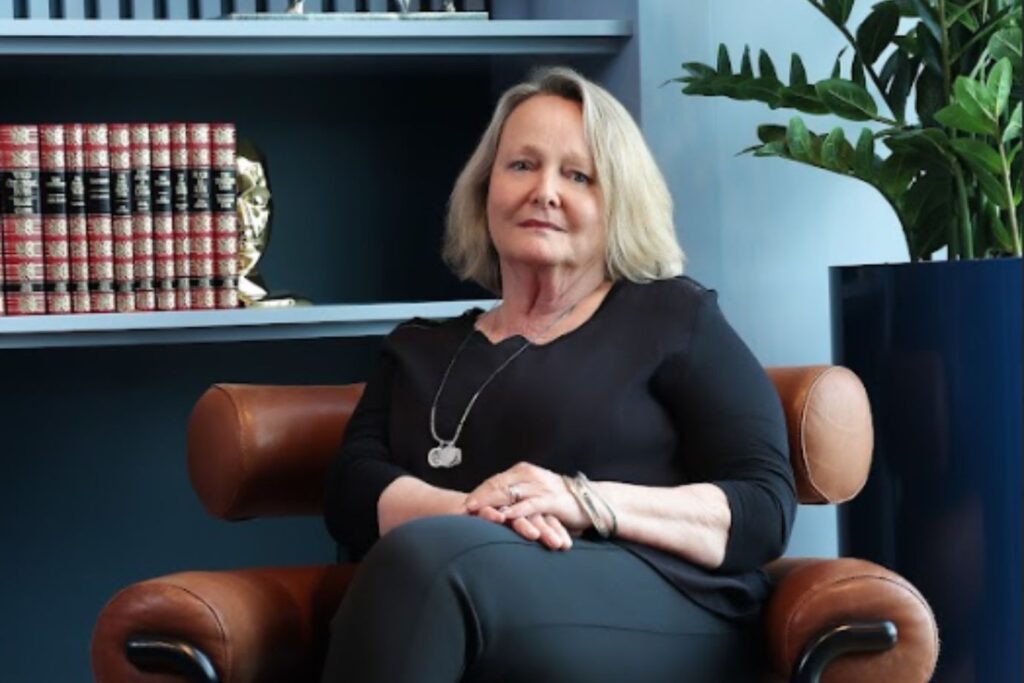Ten years on from losing her daughter Maddie to a Bone Marrow Failure Syndrome called Aplastic Anaemia, Fiona Riewoldt reflects on the moments that moved her to act, the research and compassion behind Maddie Riewoldt’s Vision, and the quiet signs that keep her going.
People ask if there was a single lightning-bolt moment that propelled our family to channel heartbreak into action and establish Maddie Riewoldt’s Vision. To be honest, it was many moments, one after another, especially when I came to the realisation that she was not coming home.
I remember thinking, “This can’t be the end of this journey.” I could hear Maddie’s voice: “People need to know about this. I want to do something.”
There was a young mother on the ward with the same diagnosis – Josie. Maddie got to know her and her family and planned a “Coffee with Josie” educational program when she got out, a way to make a difference for others fighting the same fight. When she learned that Josie had died, it was a jolt of reality. Those weeks crystallised our family’s resolve. If Maddie wanted the world to know, then that was our job.
From the beginning, the mission of Maddie Riewoldt’s Vision was clear: to find a cure. That’s still front and centre. But I also knew, from our own experience, how differently each of us carried Maddie’s illness and journey. We needed care in different ways, and we leaned on one another differently. If we were going to build something in Maddie’s name, it had to feel like family. Everyone who becomes a part of Maddie Riewoldt’s Vision is family to me.
Over time the organisation now has two deeply connected parts: the scientific drive through funding cutting-edge research and the compassionate, humanitarian heart, through the Tele-Support and Peer Support Programs. Staying close to patients and families every day is what makes the research better. It keeps us connected to why the science matters.
It’s hard to pinpoint a single instant when I felt her legacy changing or saving a life, but I know it is happening each and every day. I have met many of the patients and families that Maddie’s Vision has supported over the years – there are now over 160 across Australia. When they come up to me and thank me and say, “We don’t know where we would be without Maddie’s Vision”, in a strange way, it gives all of this meaning. Sometimes I wonder if this is the reason we lost her, that this was her way of doing something greater than she could have otherwise.
In the last 10 years, we’ve committed $9.7 million to research. It feels so surreal to say it, as we never thought that we would have come this far when we first started. As a mother, that number isn’t just a figure; it brings hope to every other family out there. I’m just so grateful that we can create hope through research and also ensure other families have someone to talk to, a sense that they’re not alone or in the dark. We just didn’t have any of that when Maddie was sick.
I often imagine what Maddie would say about what has been done in her name. To be honest, she’d be gobsmacked, I’m sure. I can almost hear her laughing “Look what I’ve done!” It wasn’t the way she wanted it to happen, but it’s something she set in motion.
Beyond funding, what the community has returned to our family is hope – and, in many respects, peace of mind. I dream of Maddie every night. I can go to sleep knowing it wasn’t all futile; people do care. What began in a cavern of grief has become something positive and purposeful. Even if breakthroughs arrive beyond my lifetime, I want her name to keep driving this work forward in the world and to be attached to something life changing.
I still have days when I’m no use to anyone and I want to be alone. That’s how grief often visits me. It never goes away – and I’m content for it to be there. It hasn’t become easier, I’ve just learned how to live with it. I try not to sit with the most horrible parts. Instead, I make space for the funny moments Maddie would have noticed, the wry humour she would have loved. I let myself have those days. And then I keep going. If Maddie could fight as hard as she did for five years, I can get through a day.
One of the ways that we cope is to spend time in Maddie’s favourite place, Orford, on the east cost of Tasmania. When I drive alongside the river heading into town, I feel lighter, like it is almost uplifting. It doesn’t matter what the weather is like, the beach – “Maddie’s Beach” – is always just so beautiful. When I walk along the sand, I look for signs from her. One day, not long after we lost her, I found two cowrie shells lying side by side. We had hunted on that beach for cowrie shells for years and never found any – they are so rare – and suddenly there were two right next to each other. To me, it was Maddie saying, “It’s ok Mum, I am here”.
My first grandson James was sent to me for a reason. He met Maddie as a tiny baby just before she passed away – we have a beautiful photo of her cupping his cheek and him grinning at her, an instant connection. In those early days he gave me purpose, when purpose felt impossible.
It doesn’t feel difficult to find an emotional balance between holding space for Maddie’s memory and being present for my family, because we talk about her all the time. My boys Alex and Nick share stories about Maddie with their five boys and it is as if they all knew her. It isn’t sad because we share the special memories and the funny stories, and we speak about who she was straight from the heart. My grandsons will now remind me of stories I’ve told or bring home little things that remind them of her. It keeps her with all of us. One day George, Alex’s little boy, came in and said he’d just seen Maddie. When we asked “where”? he said he saw her legs dangling from a cloud in the sky. “I like to think of it that way – that she is always there, watching over us.”
If I could ask one thing this November to help patients with Bone Marrow Failure Syndromes and their families, it would be this, please head to the fruit and veg aisle at your local Coles and pick up the beautiful Flavorite produce. Look for our logo and Maddie’s favourite colour – purple – on the tomato and capsicum packs.
It is extremely humbling, almost unbelievable, to have had a 10-year partnership with Flavorite and Coles, and to be on the cusp of raising $100,000 this month – taking Maddie’s Month to $1 million over the decade.
I’m deeply grateful to the Millis family (Flavorite’s founders), who have also turned their grief into something positive. There is a special connection between our families, and I’m so proud of what we’ve achieved together.
My biggest aspiration for our next ten years is that Maddie Riewoldt’s Vision continues to grow so we can fund more research and stand beside more patients and families.
I want our research to find better treatments and, ultimately, a cure – and above all, I want us to keep bringing hope. And if one day Maddie Riewoldt’s Vision no longer needs to exist, it will mean we’ve achieved our mission – and what an extraordinary day that would be.


